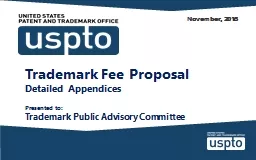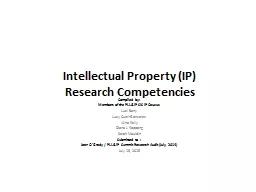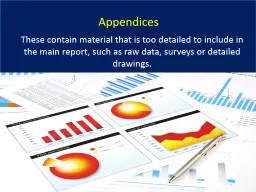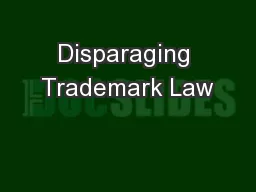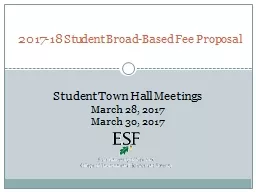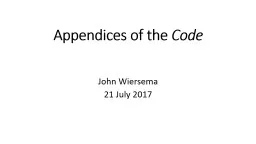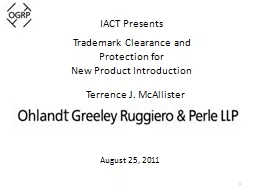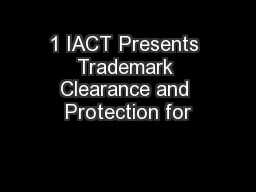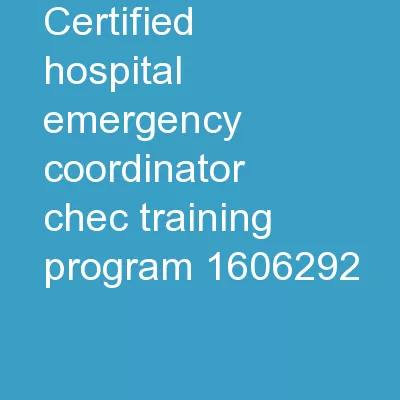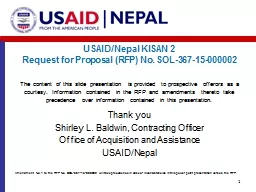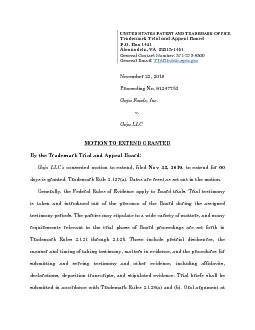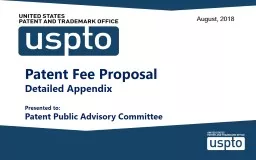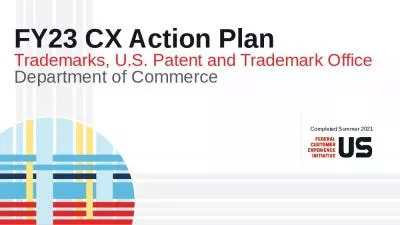PPT-Trademark Fee Proposal Detailed Appendices
Author : cecilia | Published Date : 2022-02-15
Presented to Trademark Public Advisory Committee November 2015 Introduction 2 This document includes appendices that provide background information and explain
Presentation Embed Code
Download Presentation
Download Presentation The PPT/PDF document "Trademark Fee Proposal Detailed Appendic..." is the property of its rightful owner. Permission is granted to download and print the materials on this website for personal, non-commercial use only, and to display it on your personal computer provided you do not modify the materials and that you retain all copyright notices contained in the materials. By downloading content from our website, you accept the terms of this agreement.
Trademark Fee Proposal Detailed Appendices: Transcript
Download Rules Of Document
"Trademark Fee Proposal Detailed Appendices"The content belongs to its owner. You may download and print it for personal use, without modification, and keep all copyright notices. By downloading, you agree to these terms.
Related Documents

